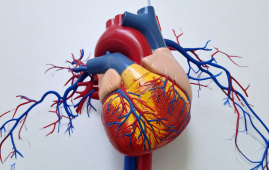

A novel artificial intelligence-based technology for detecting brain fluid flow around blood vessels could have significant implications for finding treatments for disorders like Alzheimer’s.
The perivascular gaps that surround cerebral blood arteries convey water-like fluids and aid in waste removal. Fluid flow changes have been associated to neurological disorders such as Alzheimer’s, small artery disease, strokes, and traumatic brain injuries, but they are difficult to assess in vivo.
University of Rochester Associate Professor Douglas Kelley led a diverse team of mechanical engineers, neuroscientists, and computer scientists in developing unique AI velocimetry techniques to properly determine brain fluid flow. The findings were published in the Proceedings of the National Academy of Sciences.
“In this study, we combined some measurements from inside the animal models with a novel AI technique that allowed us to effectively measure things that nobody’s ever been able to measure before,” says Kelley, a faculty member in Rochester’s Department of Mechanical Engineering.
The findings are the result of years of research undertaken by study co-author Maiken Nedergaard, codirector of Rochester’s Center for Translational Neuromedicine. Previously, the research was able to perform two-dimensional investigations on fluid flow in perivascular regions by infusing microscopic particles into the fluid and analyzing their position and velocity over time. However, more detailed measurements were required to fully comprehend the system’s complexities—and investigating such a crucial, fluid system is difficult.
To address this issue, the team teamed with Brown University’s George Karniadakis to use artificial intelligence. They used existing 2D data with physics-based neural networks to generate unprecedented high-resolution views of the system.
“This is a way to reveal pressures, forces, and the three-dimensional flow rate with much more accuracy than we can otherwise do,” says Kelley. “The pressure is important because nobody knows for sure quite what pumping mechanism drives all these flows around the brain yet. This is a new field.”
more recommended stories
 Fat-Free Mass and Brain Outcomes in Preterm Babies
Fat-Free Mass and Brain Outcomes in Preterm BabiesEarly Fat-Free Mass May Hold the.
 How Hormones Shape Dopamine-Driven Learning
How Hormones Shape Dopamine-Driven LearningNYU Study on Hormones and Cognitive.
 Protein Pair Guides Chromosome Alignment in Mitosis
Protein Pair Guides Chromosome Alignment in MitosisKey Points A joint research team.
 Intensive mind-body retreat rapidly alters brain function
Intensive mind-body retreat rapidly alters brain functionAn intensive mind-body retreat combining meditation,.
 Citrus and Grape Compounds Help Prevent Type 2 Diabetes
Citrus and Grape Compounds Help Prevent Type 2 DiabetesA new clinical trial highlights the.
 Personalized Pain Care Transforms Parkinson’s Treatment
Personalized Pain Care Transforms Parkinson’s TreatmentNew UniSA research underscores the urgent.
 Genetic Diversity Explains Obesity Risk Differences
Genetic Diversity Explains Obesity Risk DifferencesCross-ancestry Study Identifies Novel Obesity Genes.
 Meniscal Tear and OA Pain Improved by Home Exercise
Meniscal Tear and OA Pain Improved by Home ExerciseHome Exercise Proves Effective for Knee.
 AI ECG Model Outperforms Standard STEMI Triage
AI ECG Model Outperforms Standard STEMI TriageNovel AI ECG Model Outperforms Standard.
 New Software Transforms Real-Time Pathogen Surveillance
New Software Transforms Real-Time Pathogen SurveillanceReal-Time Pathogen Surveillance Software Transforms Environmental.

Leave a Comment